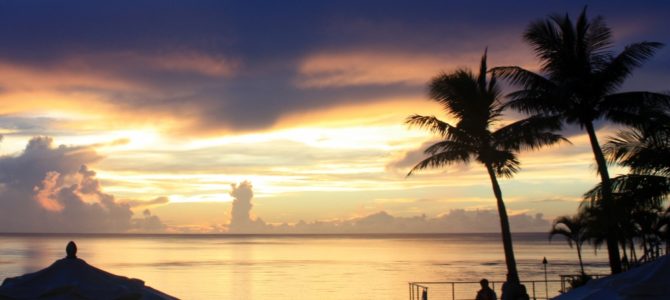As we mark 75 years since the cessation of hostilities in the Pacific Theater of the Second World War, we should keep in mind that it was not the United States’s 48 states then whose land and people sustained the scars of enemy occupation. That was borne by the U.S. territories, whose residents continue to play a pivotal role in our nation’s life.
For 23 minutes on September 2, 1945, the world was tuned in to a ceremony of the greatest importance coming from Tokyo Bay. That morning aboard the U.S.S. Missouri, U.S. Gen. Douglas MacArthur signed as supreme commander for the Allied Powers the documents accepting the unconditional surrender of the Japanese Empire, officially ending World War II.
Americans know well that the United States joined WWII as a direct result of the sneak attack on Hawaii on December 7, 1941. What is less remembered now is that Hawaii was a U.S. territory at the time and that all of the American lands in the Pacific seized by Japanese forces and occupied during 1941-1945 lay in U.S. territories, not the atates.
While there were German and Japanese submarine attacks on both the Atlantic and Pacific coasts, it was four U.S. territories – Guam, the Philippines, Kiska and Attu in the Aleutian Islands of Alaska, and Wake Atoll – which were the only American land to suffer enemy occupation. It was not until 1959 that Hawaii and Alaska became states. The Philippines became a territory of the United States in 1898 and achieved its independence on July 4, 1946. The U.S. territory of American Samoa was bombed in WWII but never occupied.
The now U.S. territory of the Commonwealth of the Northern Mariana Islands was administered by the Japanese before the start of WWII but was liberated by Americans in 1944 after battles on Saipan and Tinian. The Northern Mariana Islands then became part of the post-World War II United Nations Trust Territory of the Pacific, and in 1976, the U.S. Congress approved a mutually negotiated Covenant to Establish a Commonwealth of the Northern Mariana Islands in Political Union with the United States of America.
The United States military also engaged in fierce battles to liberate the Alaskan Aleutian Islands in 1942-1943, Guam in 1944, and the Philippines in 1944-1945 from enemy occupation. The United States infamously protected the territory of Midway from Japanese attack. This history seems better known today than the sacrifices made to defend the tiny U. S. territory of Wake Atoll, which lies in the Western Pacific about 2300 miles west of Honolulu.
In 1899, at the time the United States took possession of Wake Atoll, it had no indigenous population. Then, in 1934, Wake was placed under the jurisdiction of the Department of the Navy, and a powerful naval and air facility was established there in 1939. The atoll also provided Pan American Airways, other commercial carriers, and military aircraft with a stopover and refueling station between Honolulu and Guam en route to Asia.
It was while the Navy administered the atoll that Wake was attacked and valiantly defended against the Imperial Japanese Force’s relentless assault, but eventually, it fell on December 23, 1941, and was occupied until the end of the war in 1945.
By executive order in 1962, President John F. Kennedy made the Department of the Interior responsible for Wake Atoll’s civil administration, and in 1972 the Department of the Air Force took over the atoll’s civil administration.
Today, in the Pacific, Hawaii, and Alaska are our 49th and 50th states, and the people of Guam, American Samoa, and the Commonwealth of the Northern Mariana Islands enjoy U.S. citizenship. Midway and Wake Atolls are inhabited but the following U.S. territories (or possessions) are not: the islands of Baker Island, Howland, and Jarvis; the atolls of Johnston and Palmyra; and finally, Kingman Reef.
Seventy-five years since the cessation of hostilities in the Pacific Theatre of the Second World War, the U.S. territories and our allies in the Pacific remain a priority for the United States and for President Trump. Under his leadership, the United States has adopted an Indo-Pacific Strategy meant to maintain a strong U.S. presence in the region we fought hard to liberate from enemy domination.









